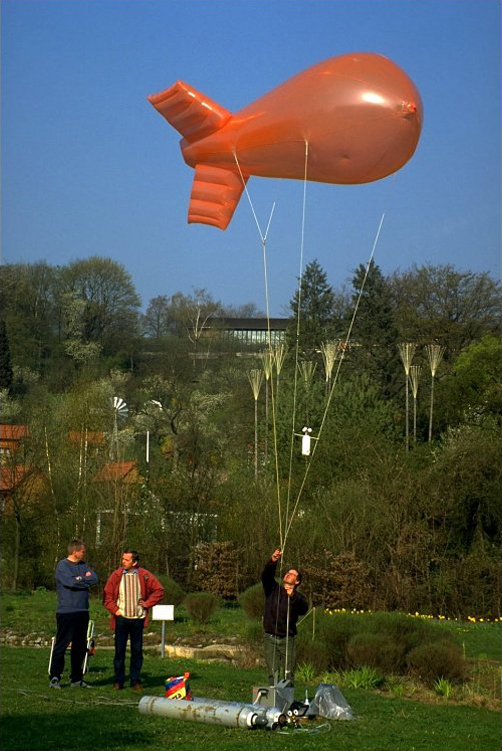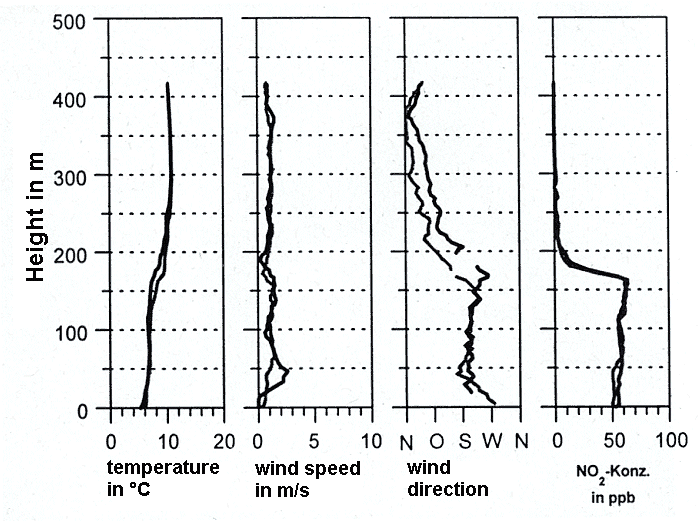|
|
| METHODS OF INFORMATION ACQUISITION FOR PLANNING
(MEASUREMENTS, WIND TUNNELS, NUMERICAL MODELLING) |  |
| | | |
 4.1.4 Vertical Soundings 4.1.4 Vertical Soundings |
The study of the spatial dimension of climatic processes also demands the consideration of the "third dimension" and thus the measurement of vertical structures in the urban atmosphere. For this purpose, traditional measurements with the help of balloon-carried, free-flying radio probes or anchored balloon flights (Figure 4/6a) can be employed. SODAR and LIDAR are ground-based measurement procedures with the option of continuous vertical sounding (Fig. 4/6b). These project sound waves (SOnar-RaDAR) or laser light waves (LIght-RaDAR) into the atmosphere, and the reflected returns are measured (via the Doppler Effect). With this, wind direction and velocity can be measured in individual increments of altitude between about 20 m and 600 m. The RADAR-procedure is typically used for altitudes above 600 m.
|
|
| | | |
 |
| Fig. 4/6a: Captive balloon with measuring instrument | | |
 |
| Fig. 4/6b: Vertical sounding of temperature, wind, and nitrogen dioxide in Stuttgart in April morning; BAUMBACH et al., 1999 |
|
